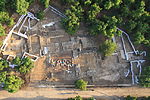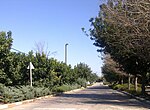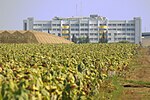Al-Tall, Acre
1948 disestablishments in IsraelArab villages depopulated during the 1948 Arab–Israeli WarDistrict of AcreWikipedia extended-confirmed-protected pages

Al-Tall (Arabic: التلّ), was a Palestinian village 14 km northeast of Acre in the British Mandate District of Acre. Depopulated as a result of military assault and capture during the 1947-1948 Civil War in Mandatory Palestine as part of Operation Operation Ben-Ami by the Carmeli Brigade of the Israel Defense Forces.
Excerpt from the Wikipedia article Al-Tall, Acre (License: CC BY-SA 3.0, Authors, Images).Al-Tall, Acre
70, Mate Asher Regional Council
Geographical coordinates (GPS) Address Nearby Places Show on map
Geographical coordinates (GPS)
| Latitude | Longitude |
|---|---|
| N 33.008611111111 ° | E 35.138611111111 ° |
Address
תל כברי
70
2512300 Mate Asher Regional Council
North District, Israel
Open on Google Maps









